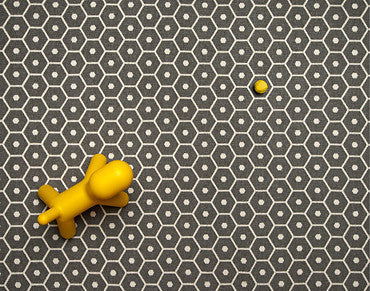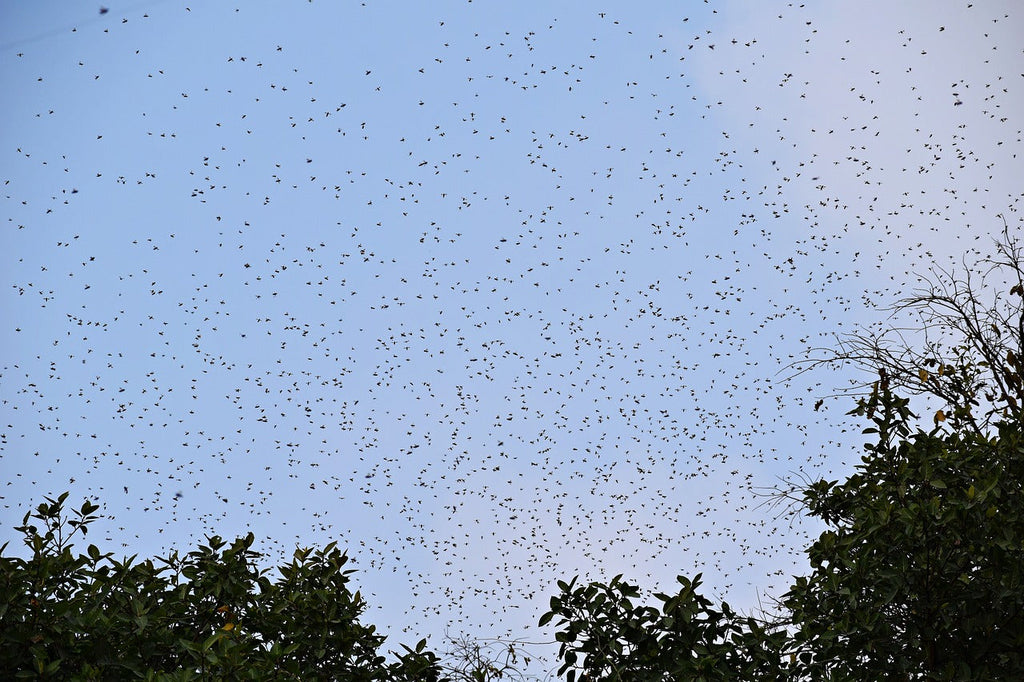The Benefits of Honey
We've all read that honey is good for us. Here's a refresher on why... 1. Honey contains anti-oxidants which could help prevent some cancers and heart disease. 2. "All honey is antibacterial because the bees add an enzyme that makes hydrogen peroxide," said Peter Molan, director of the Honey Research Unit at the University of Waikato in New Zealand. 3. Ancient Olympic athletes would eat honey and dried figs to enhance their performance. More modern studies have shown that honey does help athletes recover quicker than other sugars. 4. The best part of having a cold is that teaspoon of...
Plastic Honey Rug
Plastic is not the first material I think of when looking for a rug. But if you're looking for a rug that looks beautiful enough to be inside but is safe to be outside, then I have something for you today. And of course I simply couldn't resist the honeycomb print. Made in Sweden by pappelina, the honeycomb rug is woven out of plastic. The company adheres to strict environmental regulations and does not use any dangerous softeners or harmful heavy metals in production. Pappelina's products have a long life and need little maintenance, thus saving on natural resources. As you...
The Best Ginger Tea Ever
I'm not a coffee drinker but I do love my tea, especially when it's homemade. The mint is just starting to poke it's head out in my garden. It's not quite ready for picking yet, but when it is, I love to make this ginger tea with mint, lemon and honey. And it's oh so good for you! Why? Ginger - Ginger root has a very high level of antioxidants and contains chemicals that may reduce nausea and inflammation. Mint - Peppermint oil seems to reduce spasms in the digestive tract, thus helping to alleviate digestion. Lemon - Lemon contains...
Where is the worst place to get stung by a bee?
Summer is just around the corner. And that means lots of picnics, walking barefoot in the grass and long days outside. Since we share the great outdoors with many wonderful creatures, chances are we will get in each other's way. Unlike wasps and yellow jackets, honey bees don't want to sting you. They don't want to sting you because if they do, they will die. The stinger becomes stuck in your skin. When the honey bee tries to fly away, she rips away part of her abdomen and internal organs and will die a few minutes later. Michael Smith had an idea,...
How to catch a Bee Swarm
How to catch a Bee Swarm My Saturday did not go as planned. The previous week I was finally able to move my bees back to my yard. Last Summer I had to relocate them due to a construction site at my house. Happy to have them in my backyard again, I wanted to split the hive to ensure that they didn't swarm to the neighbor's terrace. You can learn about why bees swarm in this blog post. My bees had other plans though. I watched them swarm on Saturday, always a wonder of nature. They don't usually go very far...





